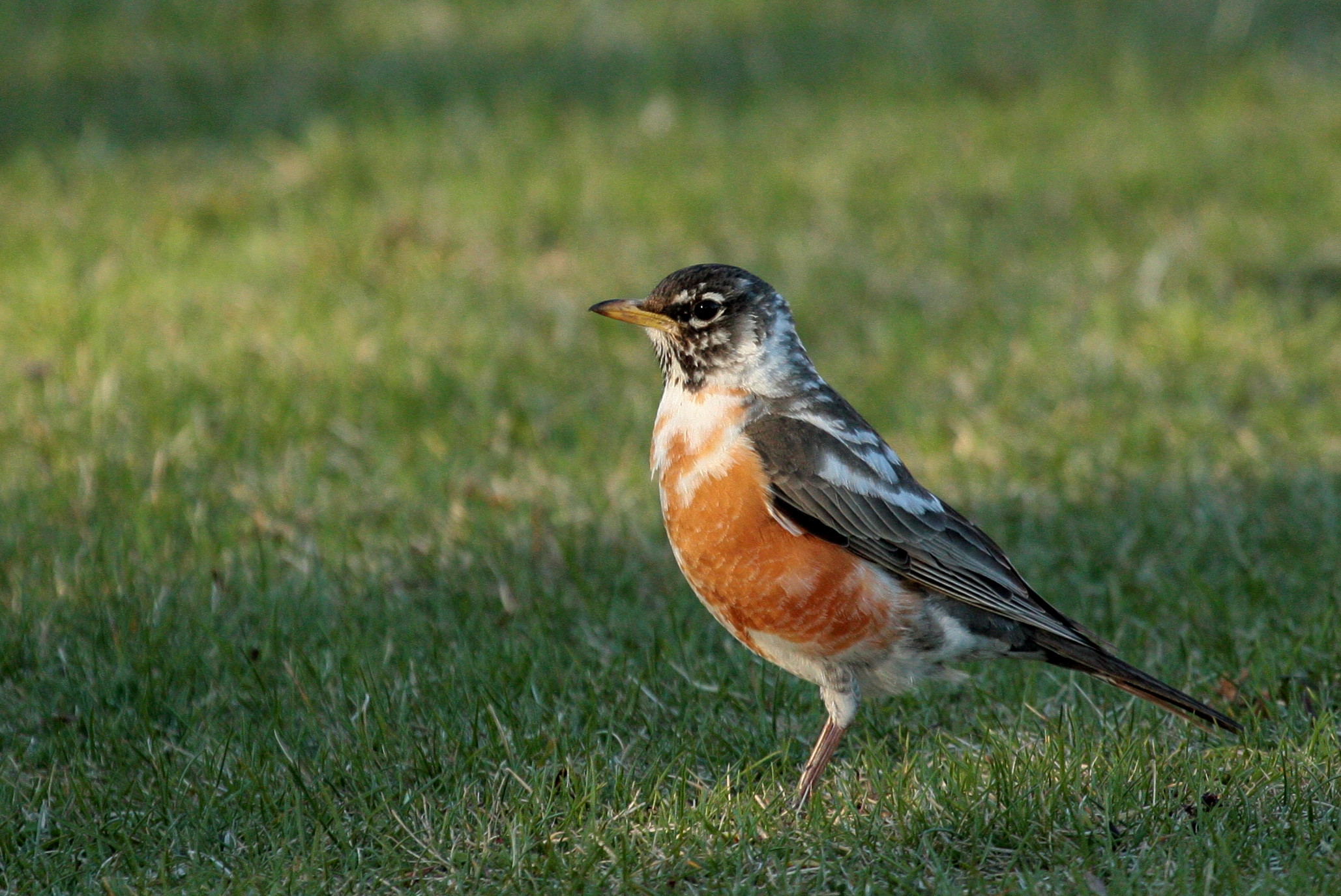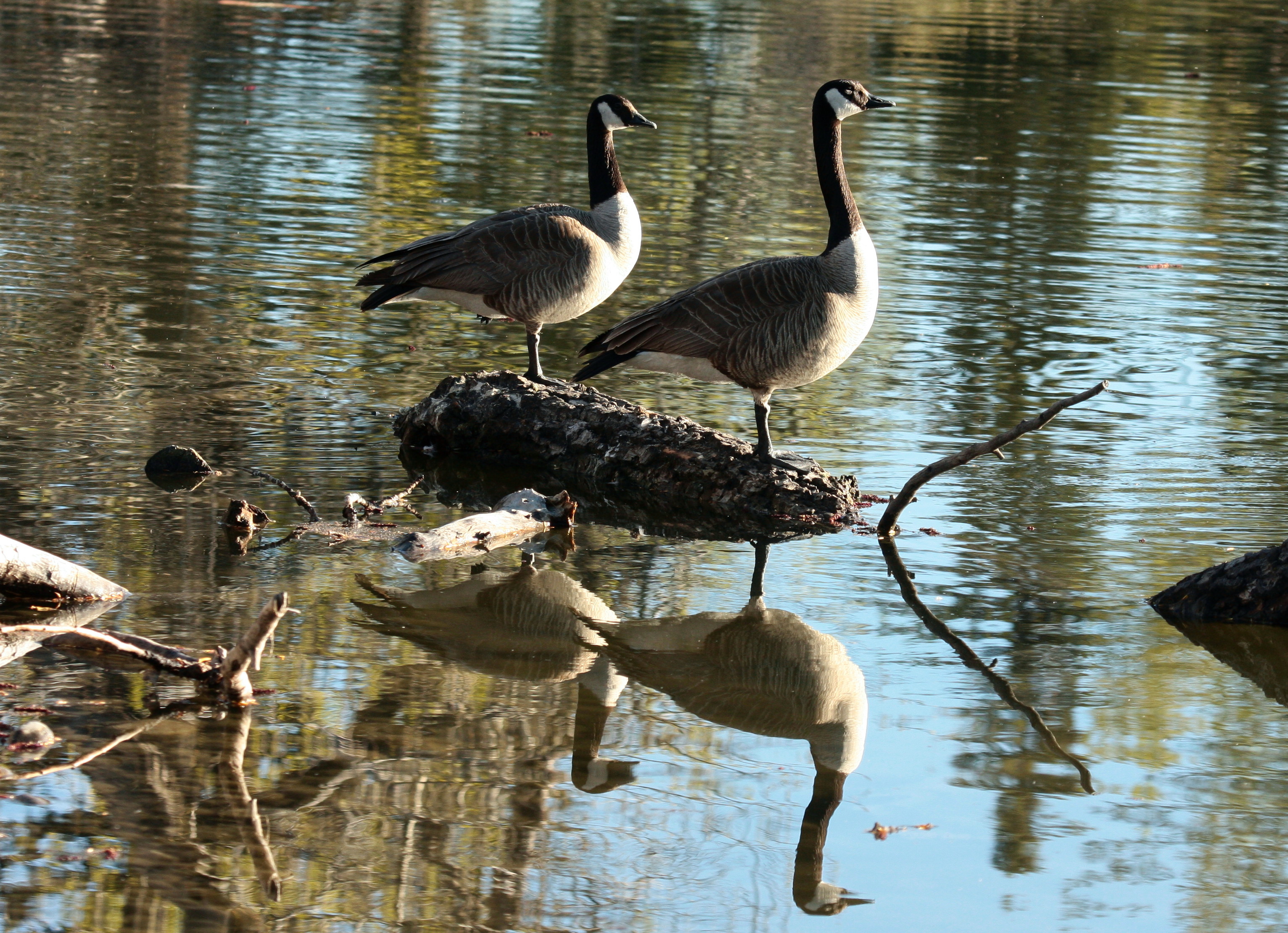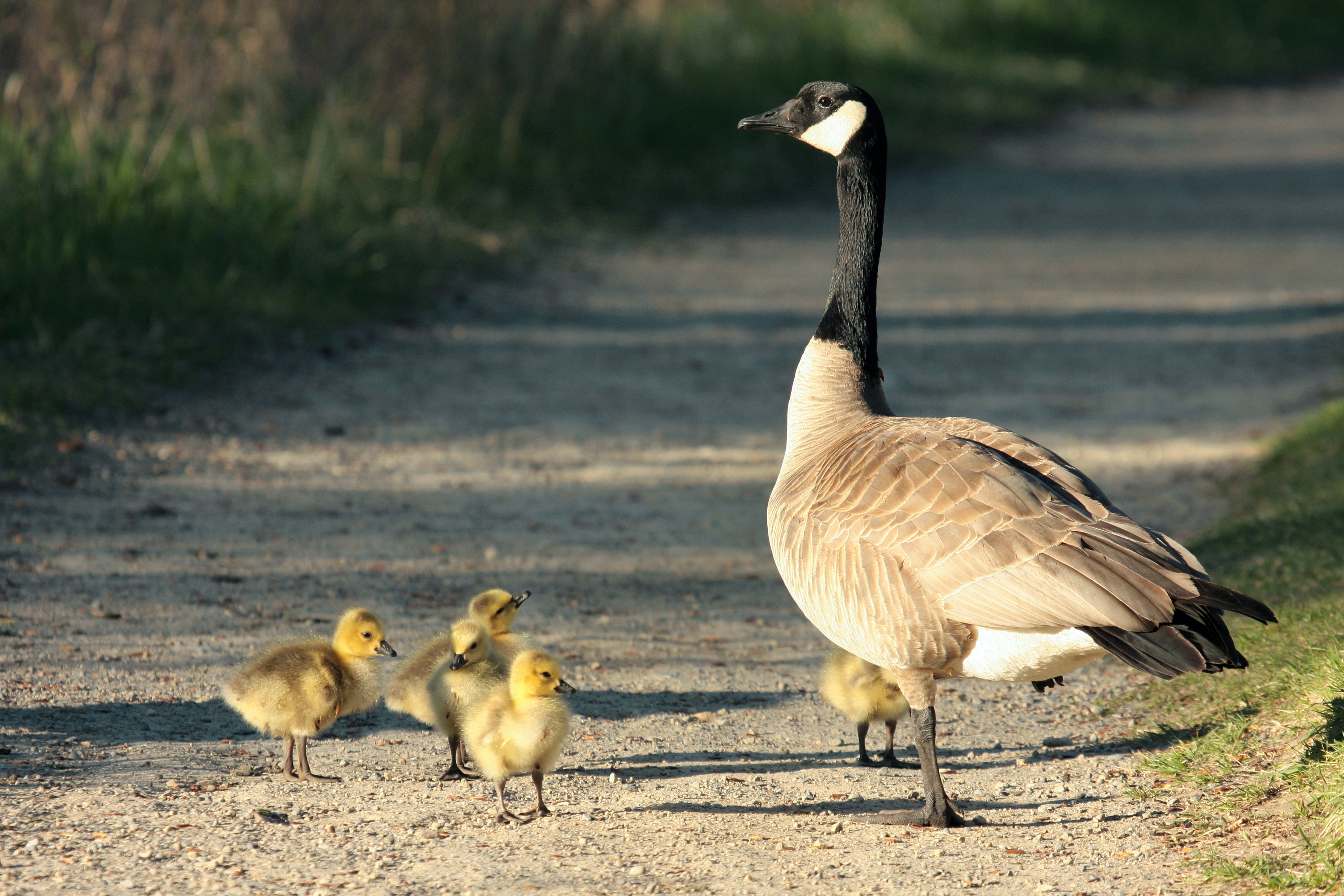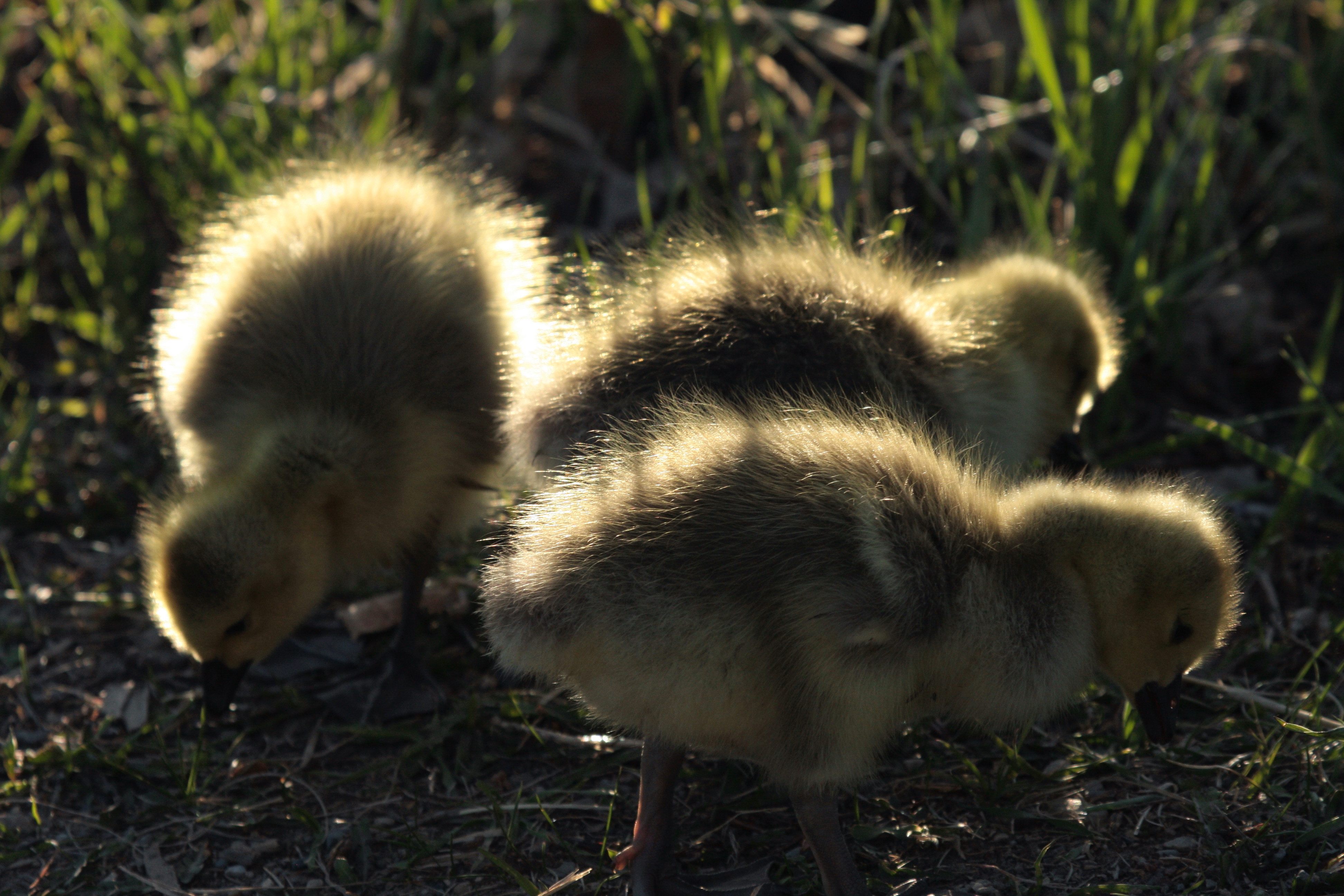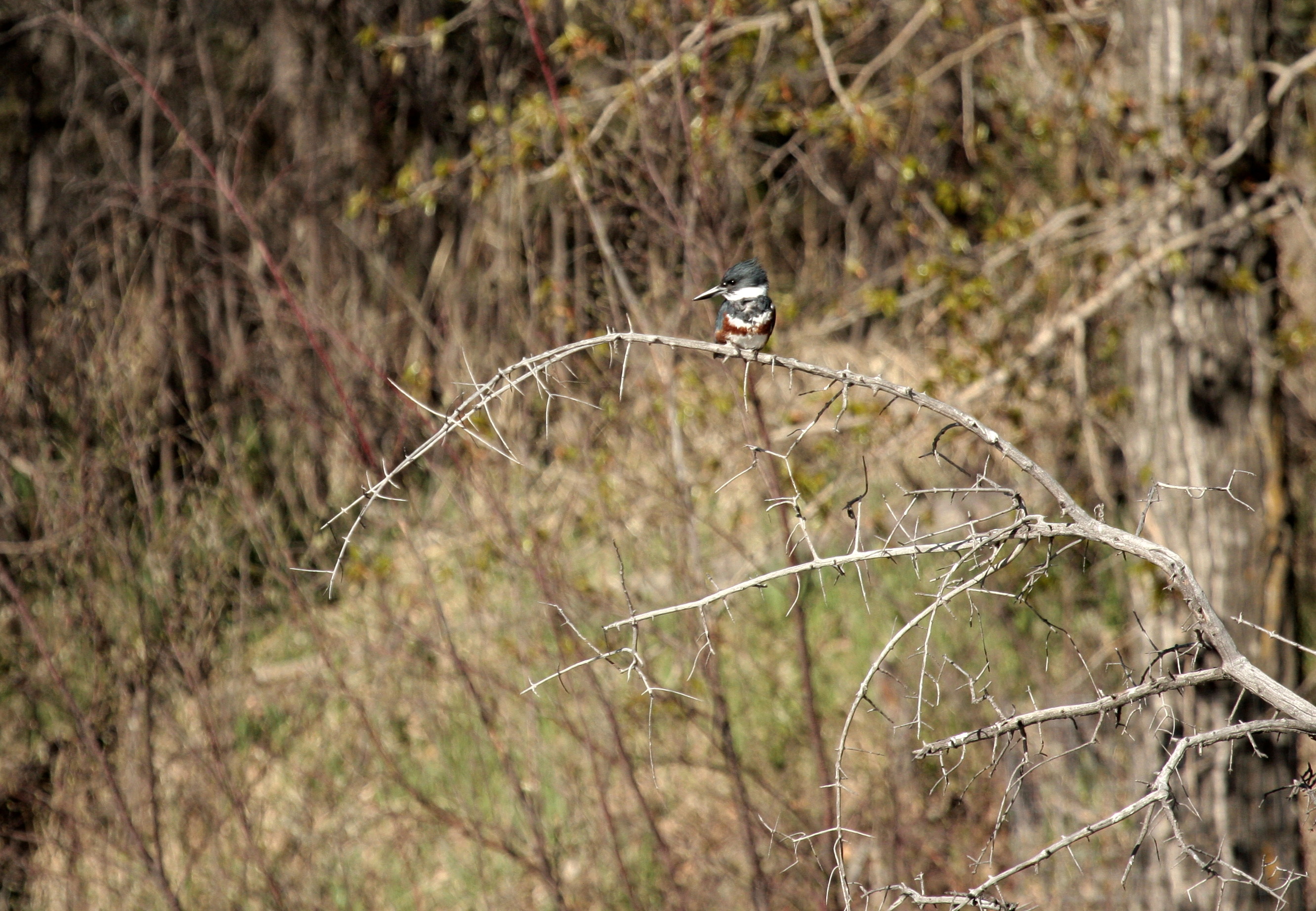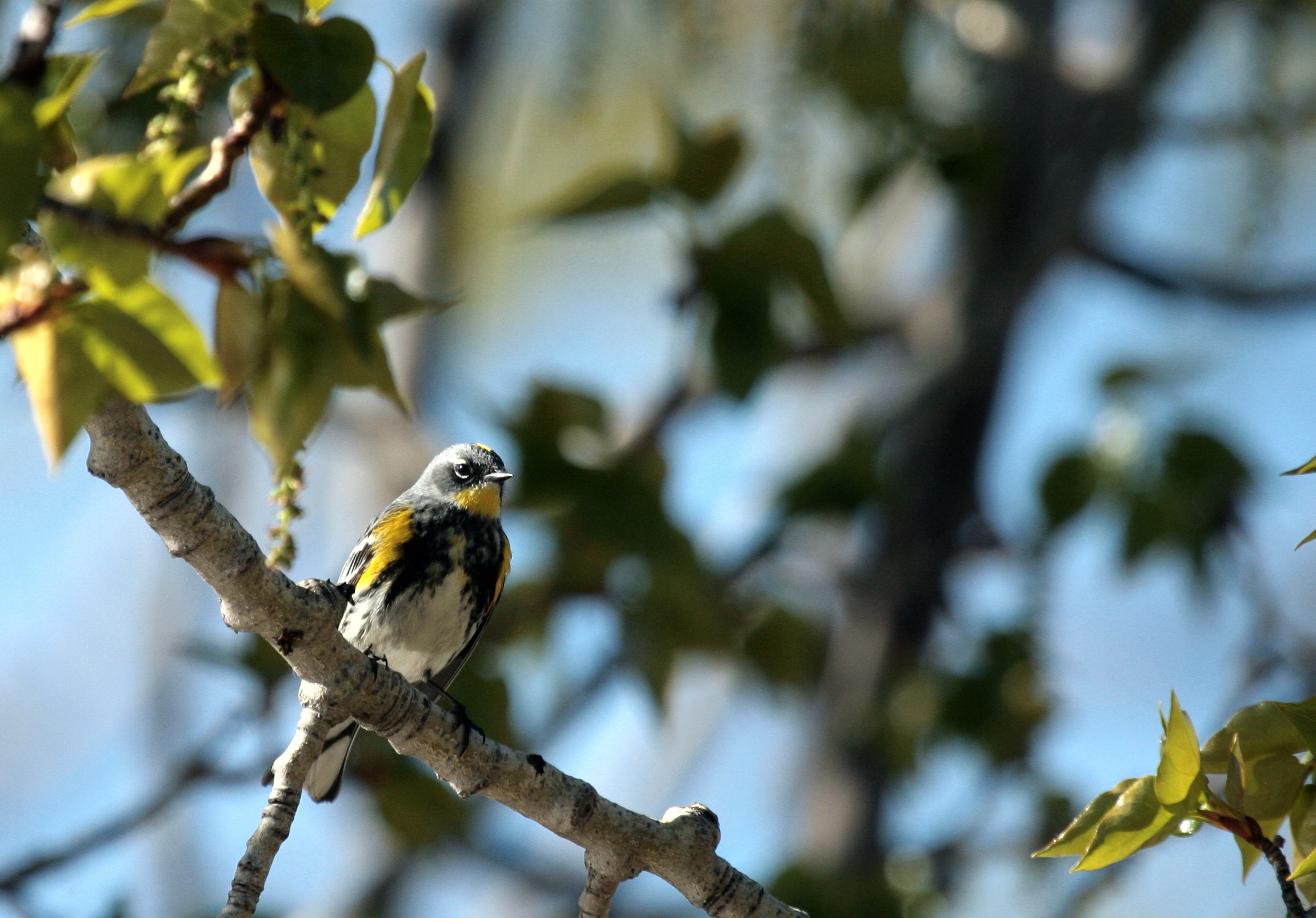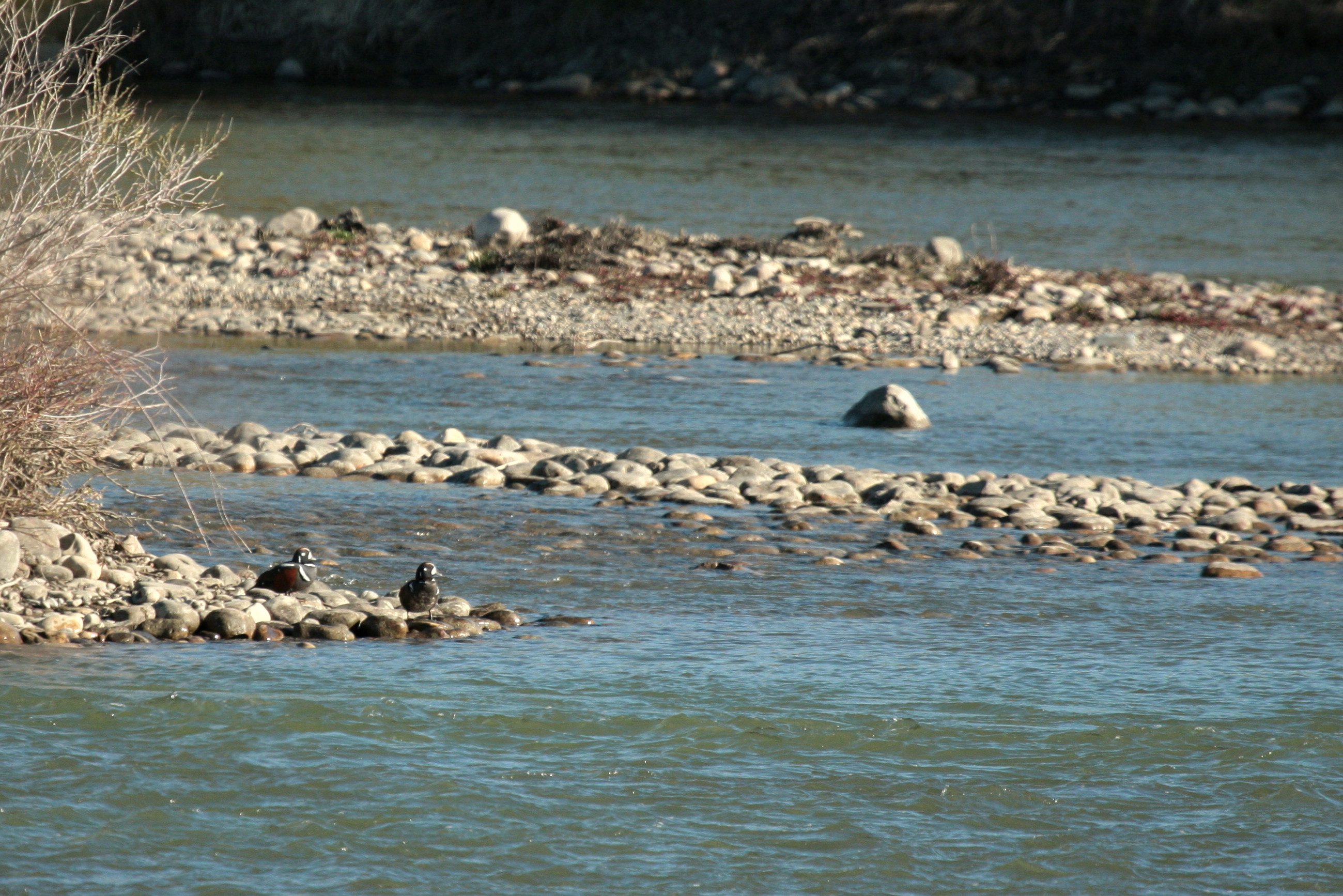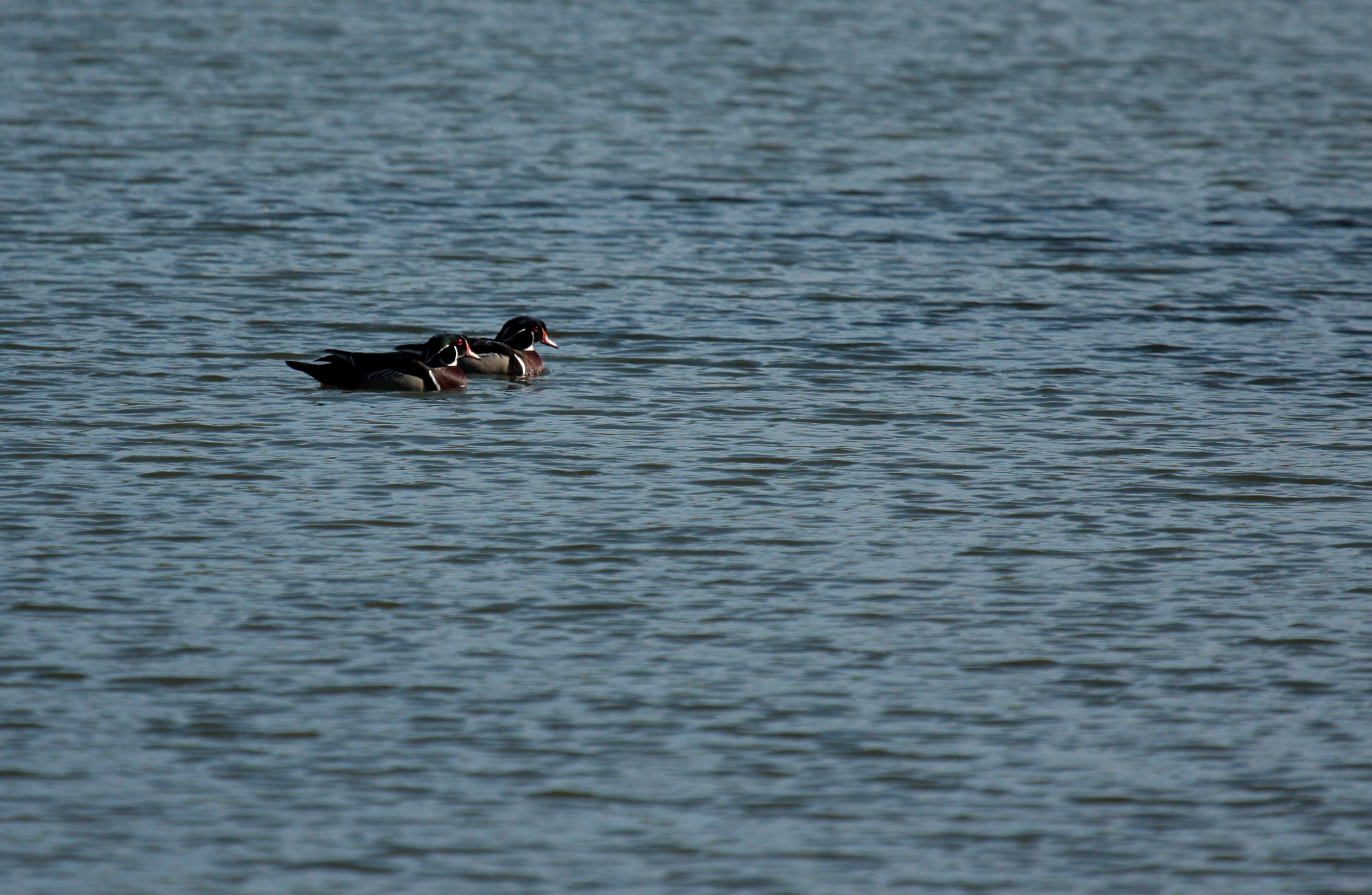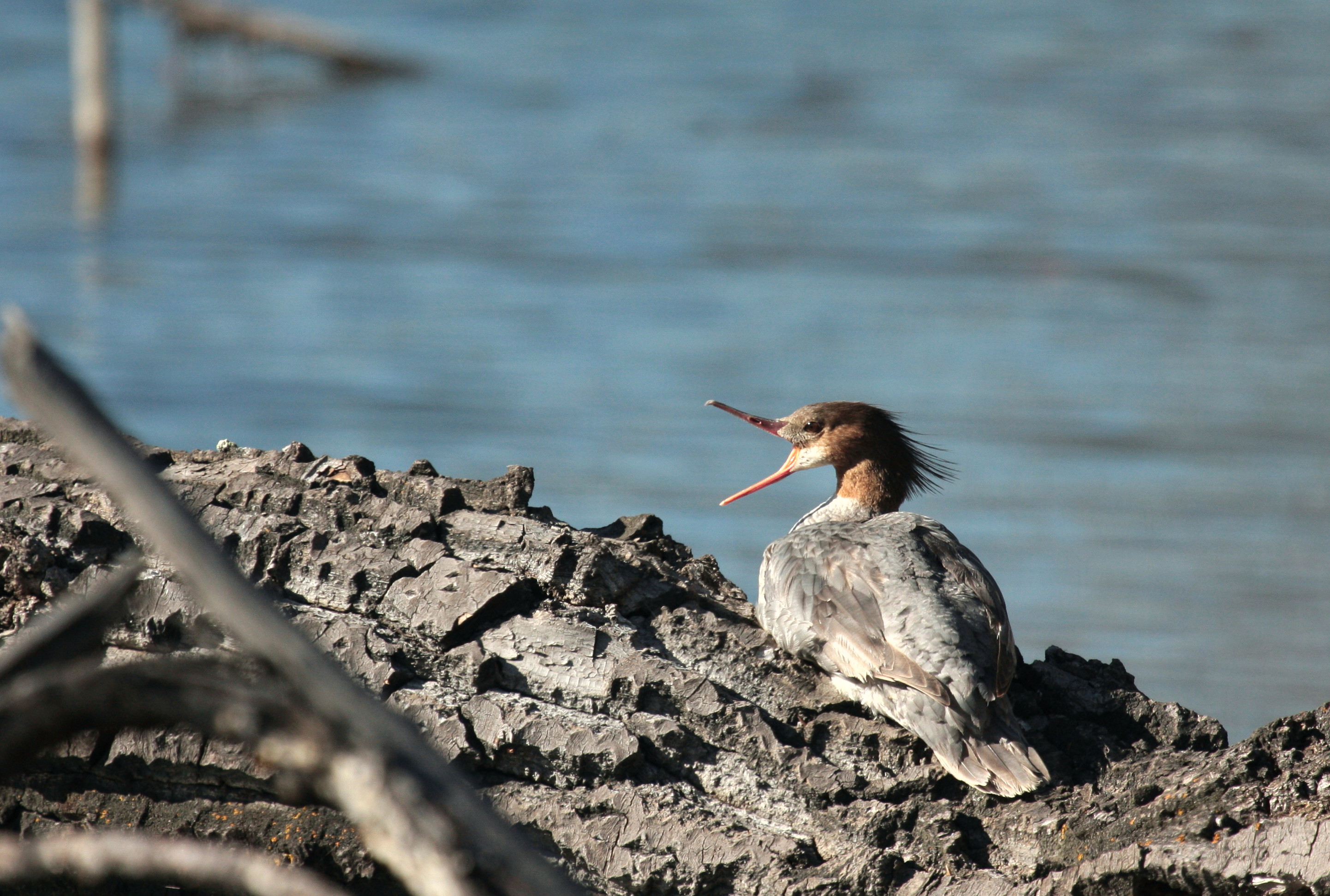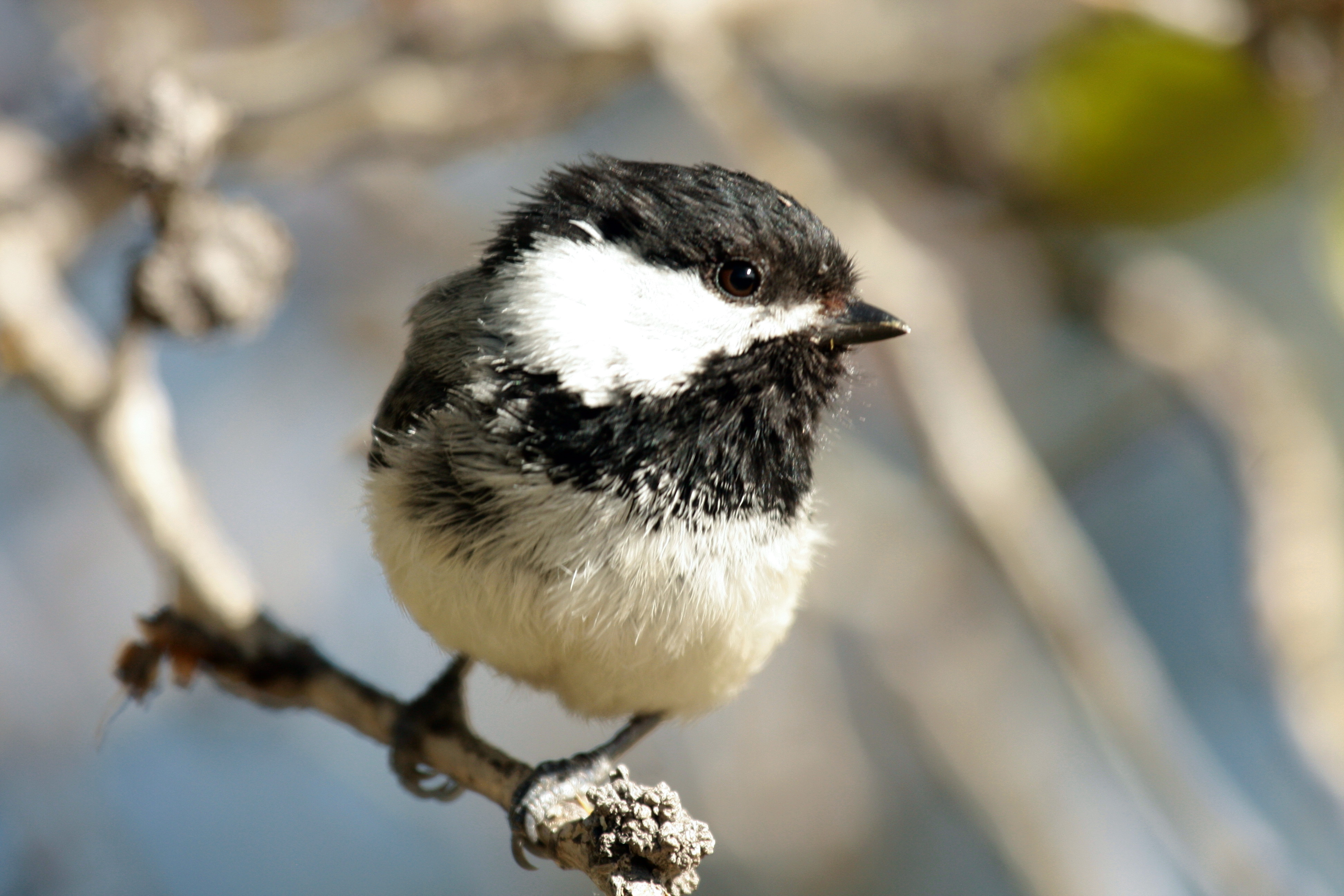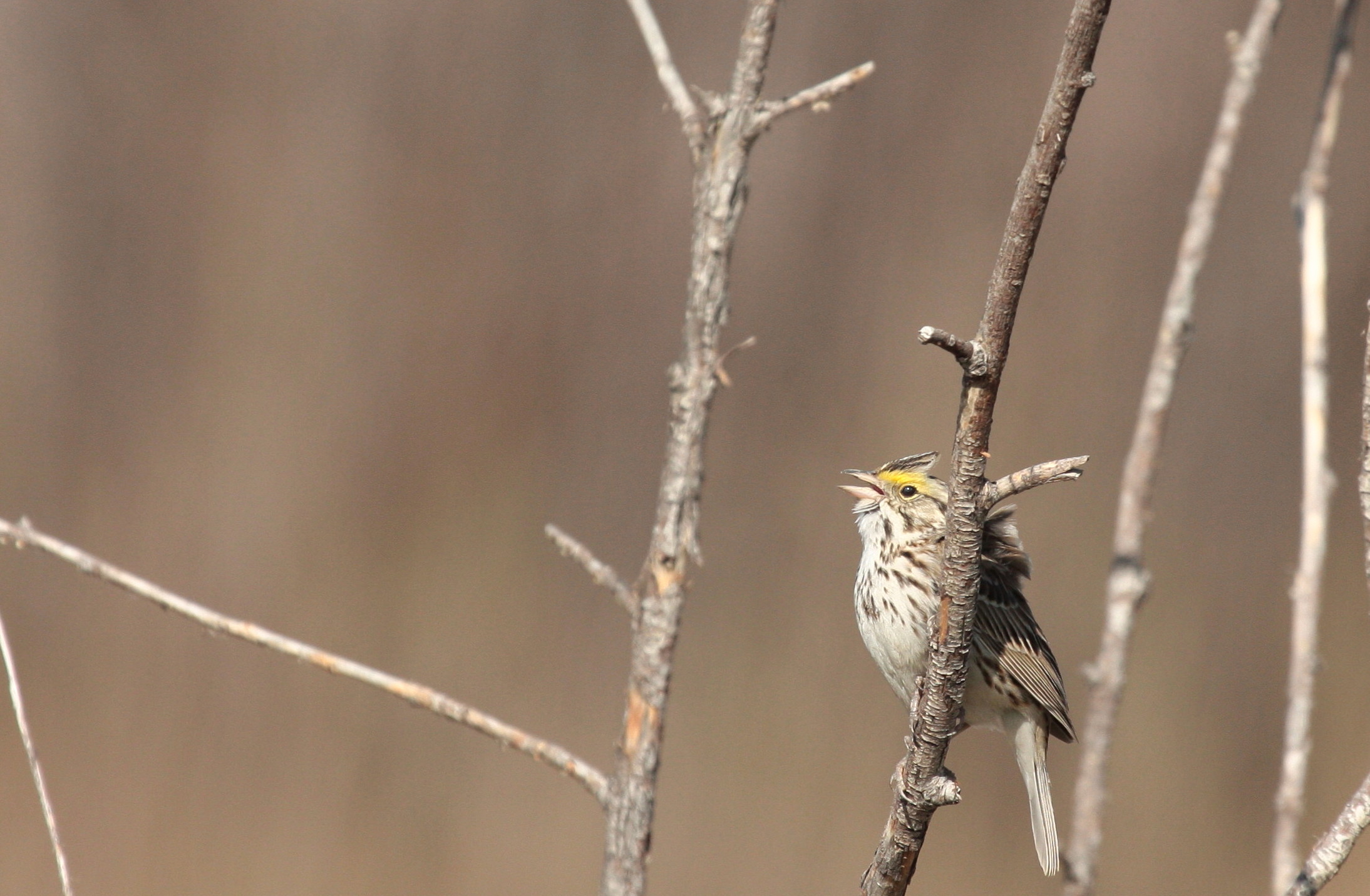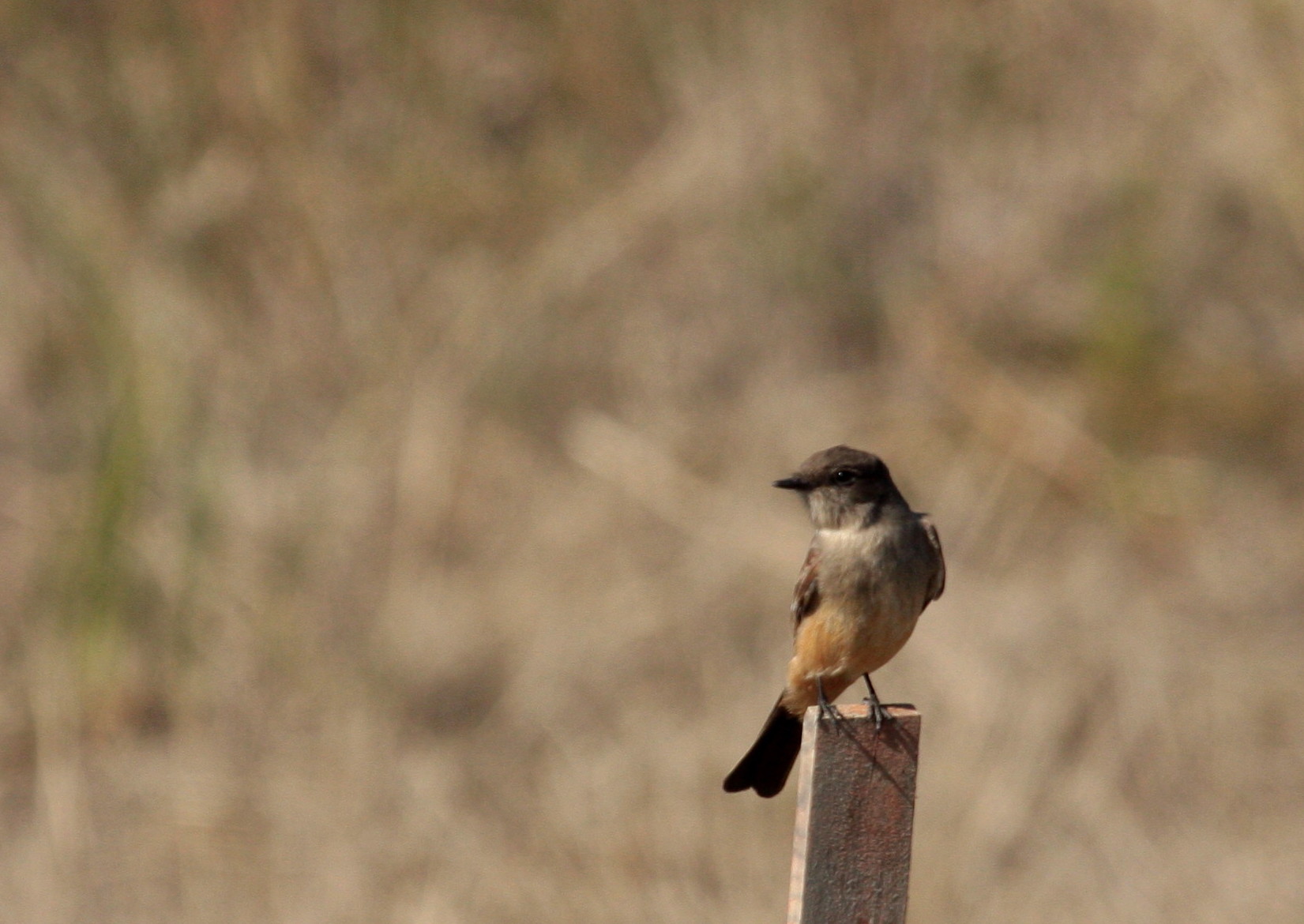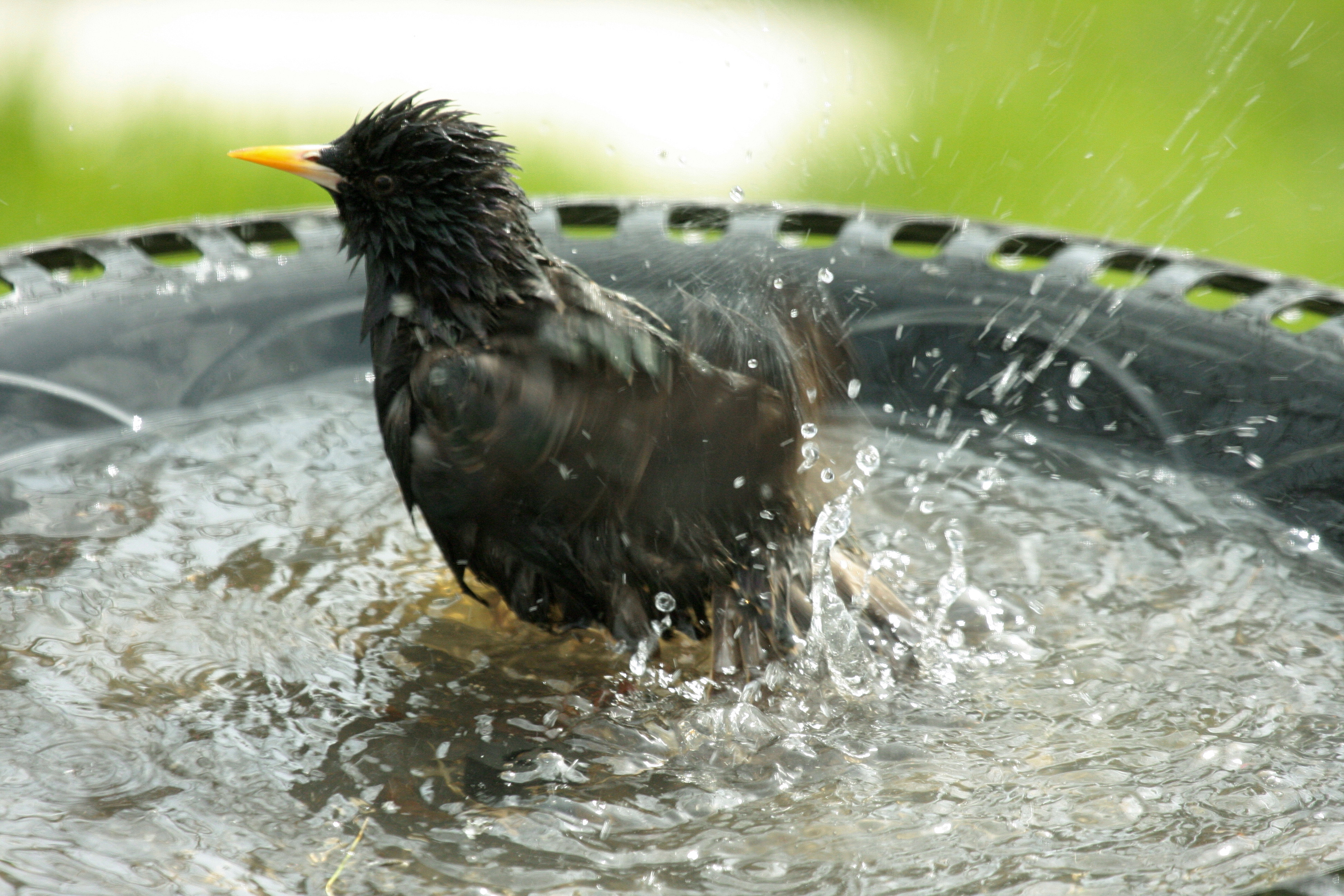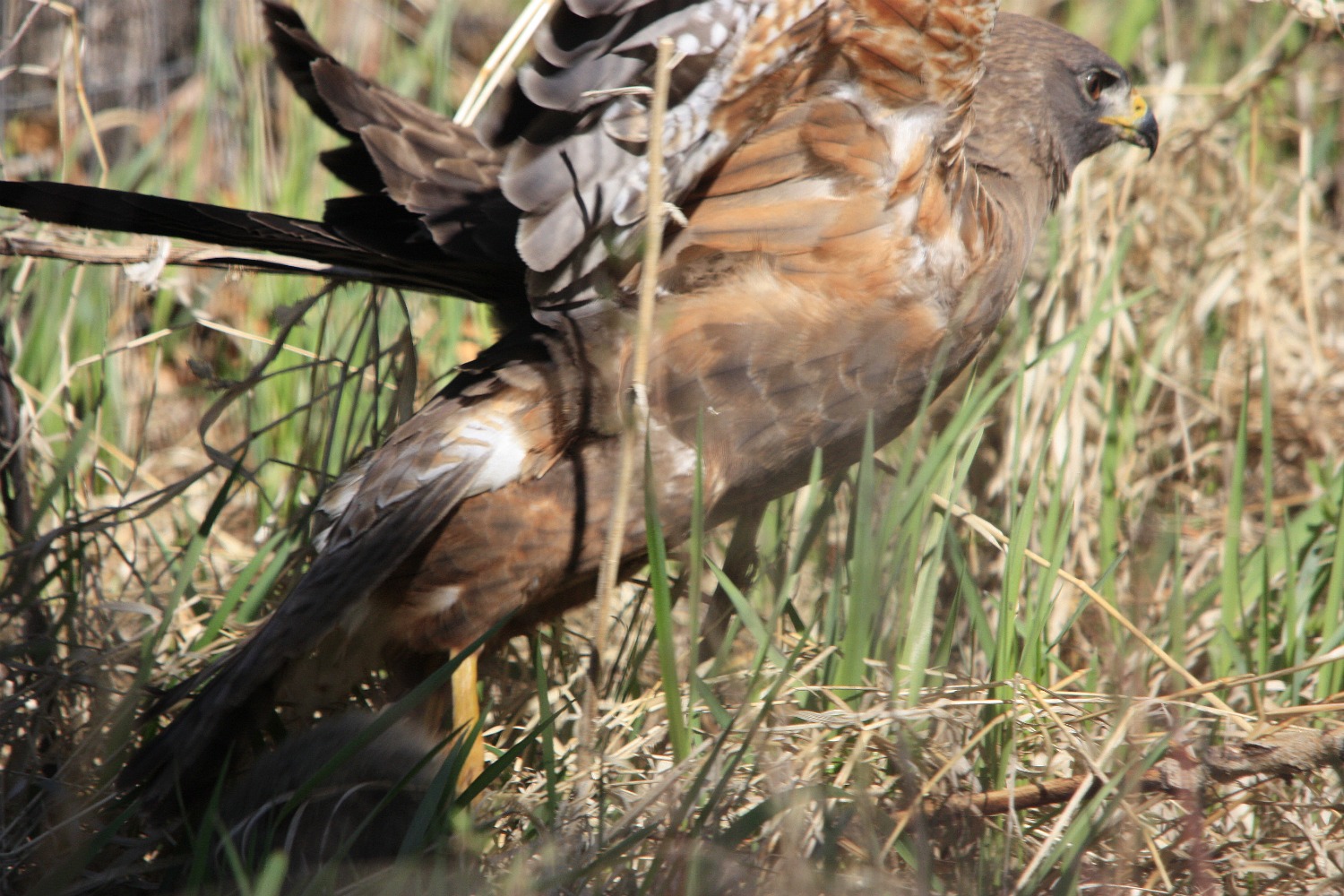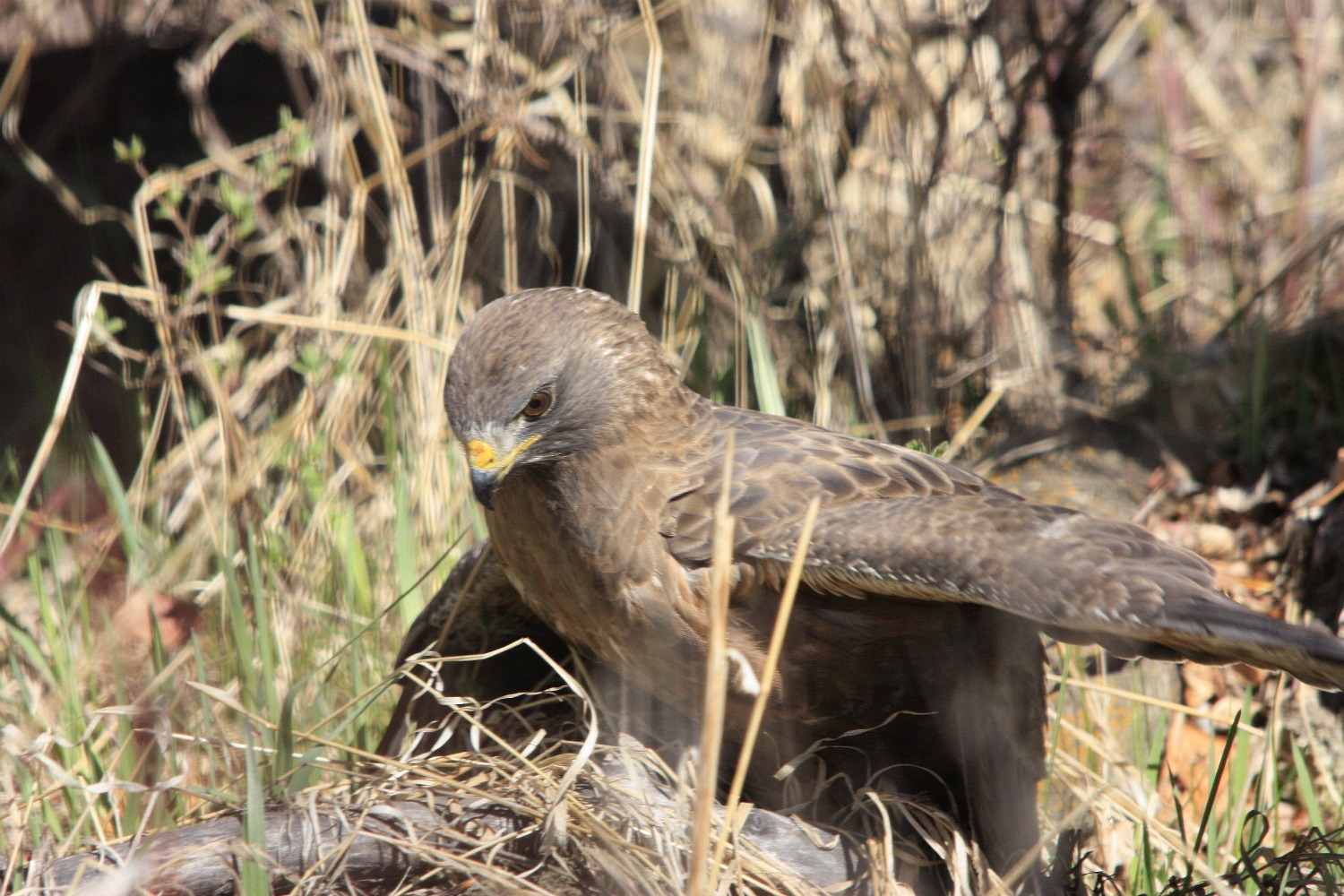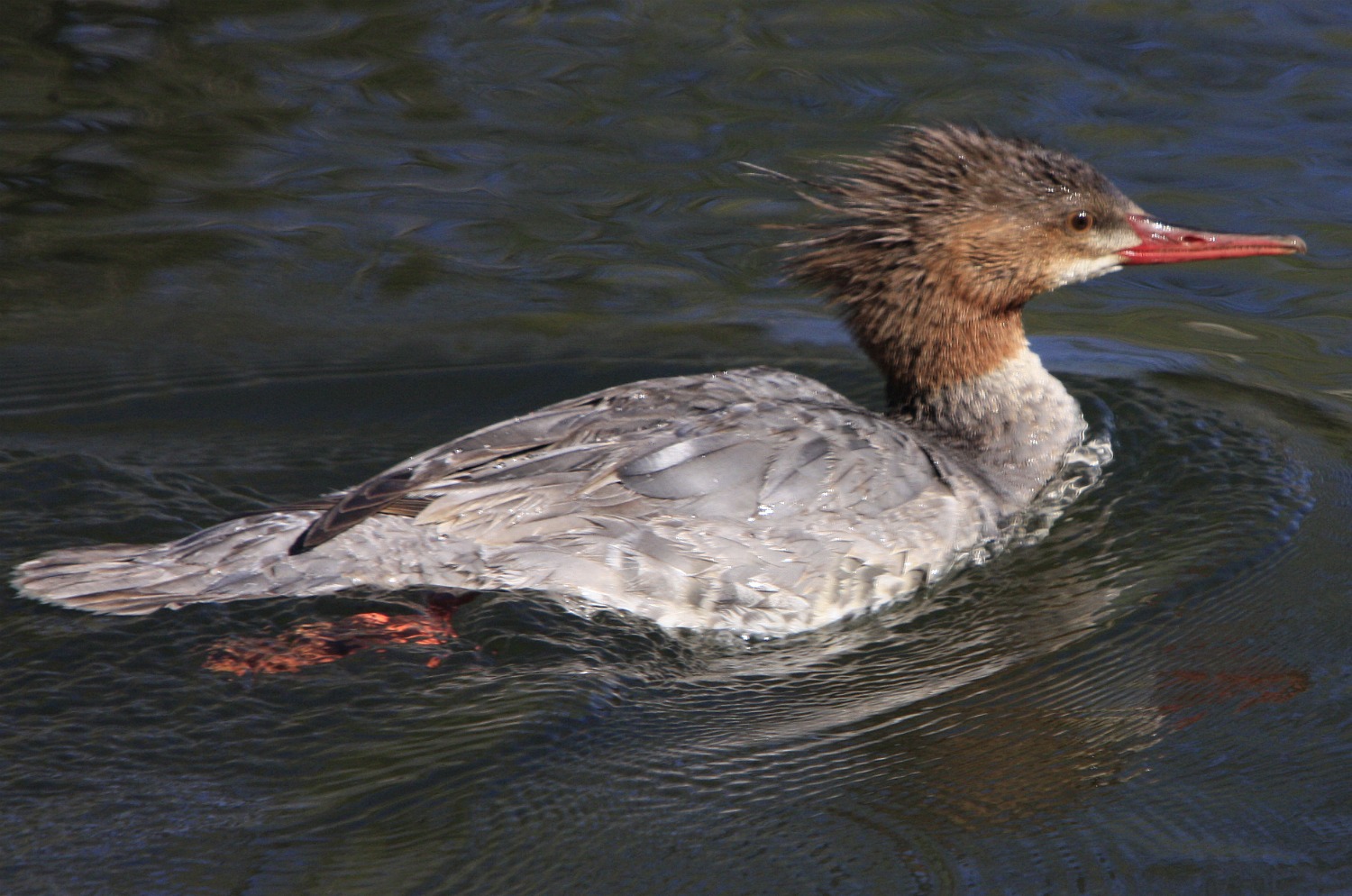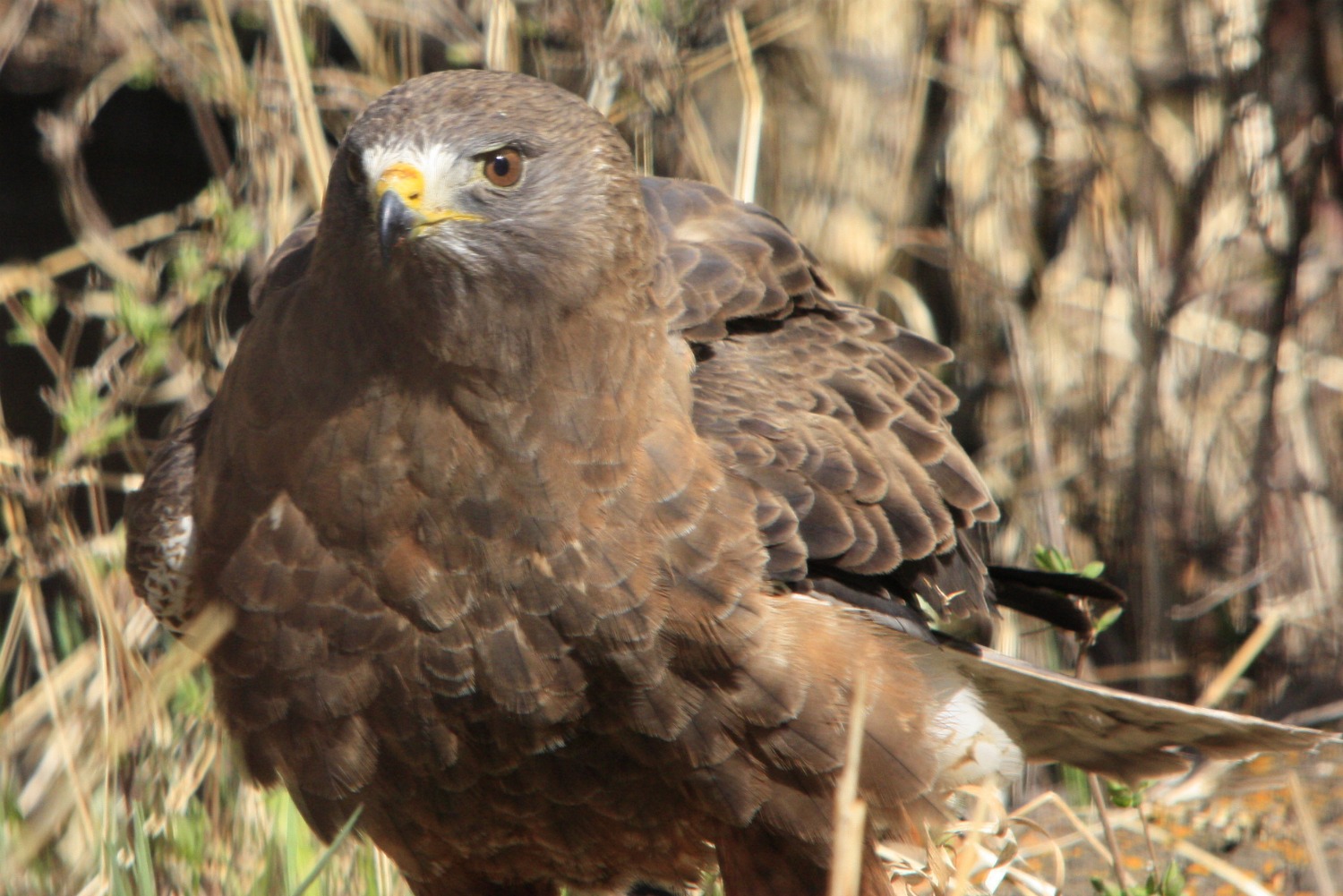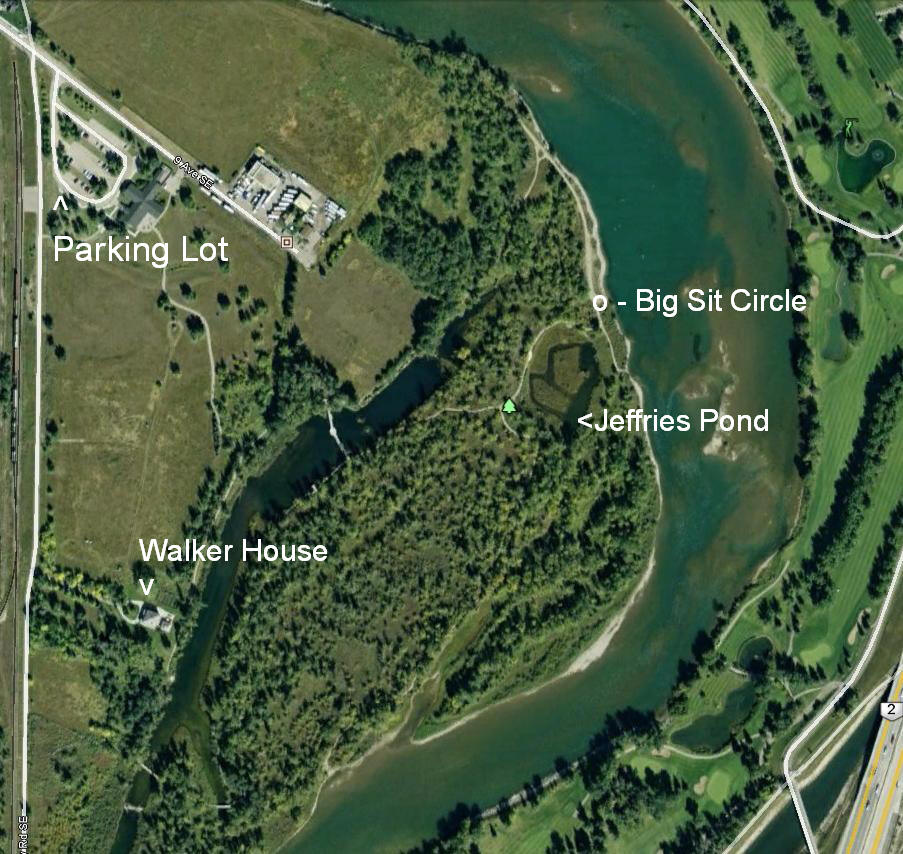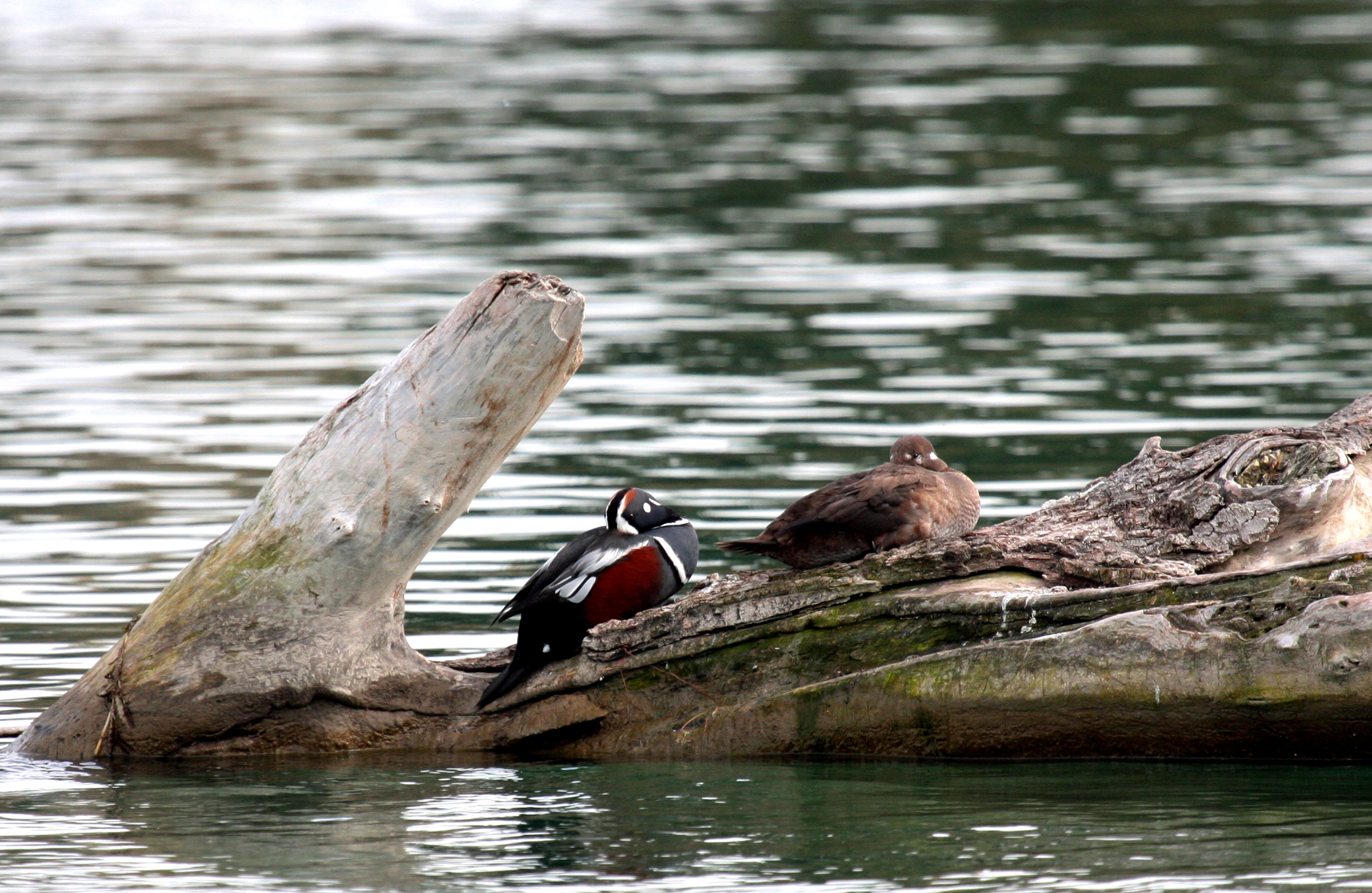At this time of year, the earlier you can get out birding the better. The sun is up and the birds are singing before 6:00 am. Sometimes it can be a little cold, but it’s a beautiful time of day to be out in the field.
Every Wednesday during the spring migration, Gus Yaki has been leading an early morning bird walk at the Inglewood Bird Sanctuary. Last week I was able to join Gus and a small group of birders, and we found 42 species of birds.
This is a Nature Calgary field trip, so it is free and open to everyone. The walk begins at 6:30 am at the parking lot and lasts for about two hours. This coming Wednesday, May 25, will be the last of these early morning walks, so if you can manage it, it’s a good opportunity.
Here are some highlights of last weeks’ walk.
There is a partially albino female American Robin which has building a nest near the south end of the lagoon, opposite Walker House. We were lucky enough to see it at close range, with its mate…
There were several pairs of Canada Geese and a few broods of goslings around…
A female Belted Kingfisher was perched over the lagoon…
Several Yellow-rumped Warblers were seen. This one is an Audubon subspecies…
Two male Harlequin Ducks on a distant island in the river…
Two male Wood Ducks on the river…
A yawning female Common Merganser…
And lots of these guys looking for handouts…
Afterwards I went over to the adjacent Inglewood Wildlands Park. There were several Savannah Sparrows singing…
And hovering over the pond, a Say’s Phoebe…
You don’t see these flycatchers in the city too often, and I got a good look at it…
Posted by Bob Lefebvre

